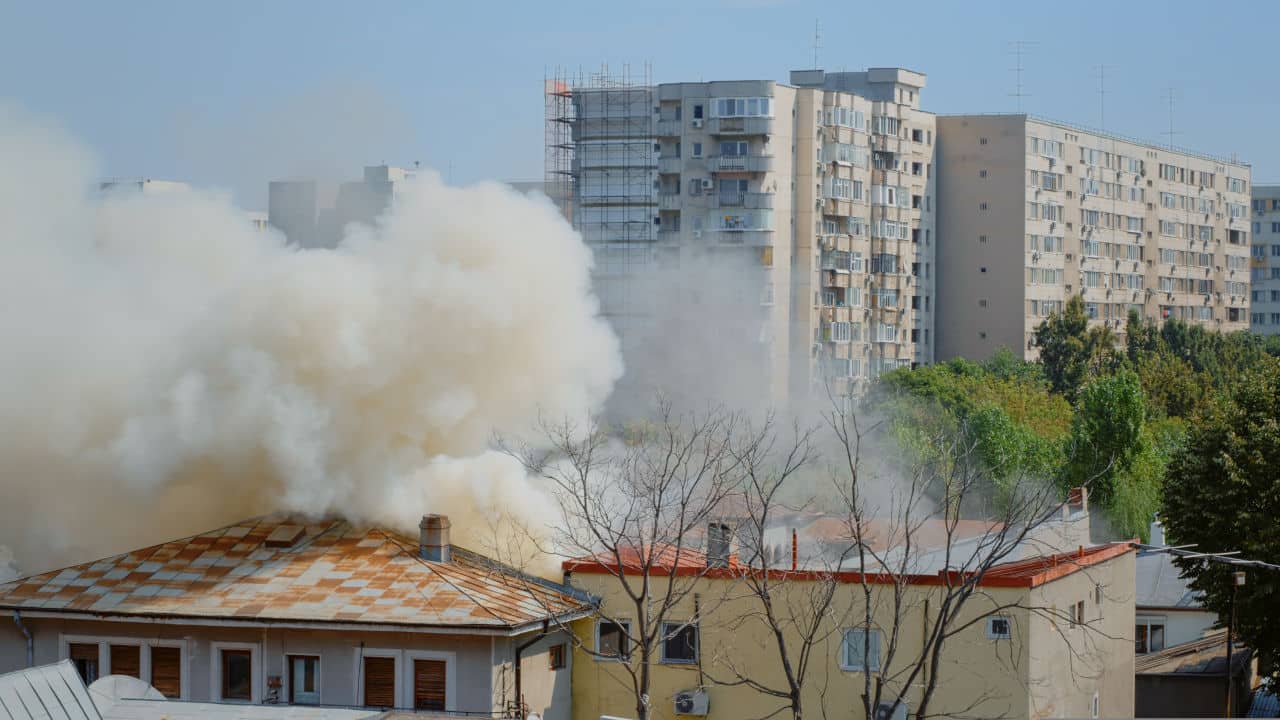The dangers of smoke inhalation are serious, and the inhalation rate is even higher as rampant as fires are. According to the CDC, the death rate attributed to unintentional injury from the fire was calculated for men and women each, according to rural and urban areas, and the numbers were in millions. Out of these numbers, 77% of the deaths are due to pulmonary complications from smoke inhalation injuries.
Two leading gases are responsible for causing immediate damage to smoke inhalation victims; carbon monoxide and hydrogen Cyanide.
Carbon monoxide is a gas with a high affinity for hemoglobin, even higher than oxygen. Therefore it mixes with it to produce carboxyhemoglobin. This prevents the tissues and the mitochondria from getting oxygen. This lack of oxygen leads to tissue hypoxia.
Hydrogen cyanide, on the other hand, is an odorless gas with a high presence at fire scenes. They cause cyanide poisoning to the victims. Hydrogen cyanide is hard to detect because the symptoms are not specific. It is strictly required to be considered when treating smoke inhalation victims.
Besides death, the risks of smoke inhalation are far too much to be swept over. For this reason, claimants can opt to use a demonstrative exhibit like litigation animation to show the causation and the mechanism of the smoke inhalation injuries experienced.
What are Smoke Inhalation Injuries?
Smoke inhalation is a term used to describe the exposure of a person’s pulmonary system to smoke. The injuries occur when the victim’s respiratory system or lung tissue is damaged due to heat from a fire, and smoke, along with the toxic chemicals released during the combustion of materials carried into the airway by inspiration.
Smoke inhalation occurs when a person is trapped in an area where a fire is present without ventilation. This need to escape results from the adrenal gland. The gland releases adrenaline that sends the person into flight mode. There would be an increased heart rate, meaning the victim is breathing harder. Therefore, they inhale more smoke. That is where the problems begin.
Common Risks of Smoke Inhalation
There are various risks and complications associated with smoke inhalation.
The smoke would affect the airways immediately. The hot smoke being inhaled will cause damage to the pharynx. It also causes swelling of the tongue, epiglottis, and aryepiglottic folds, followed by immediate obstruction.
However, the chemicals in the smoke damage the lower airways. The smoke contains toxins and damages the airway’s epithelial and capillary endothelial cells. The steam, which carries more heat and energy, would also burn the lower airways.
These upper airway injuries (above the vocal cords) will immediately bring about symptoms like coughing, hoarseness of the throat, confusion, wheezing, headache, skin discoloration, and chest pain. These are the first signs that show that a person is inhaling smoke.
The damage to the lower airways doesn’t show any symptoms until later. Examples are a decrease in lung compliance, hypoxia, and coma.
Inhalation injuries do not only affect the airways but can lead to systemic toxicity as well. These include the previously mentioned carbon monoxide poisoning and hydrogen cyanide poisoning in smoke that prevents oxygen flow.
Unfortunately, suppose the person was already a victim of other respiratory problems such as asthma, emphysema, chronic bronchitis, chronic obstructive pulmonary disease, heart disease, etc. In that case, they are at a greater risk of permanent damage.

Cases of Smoke Inhalation Injuries
There are several cases of smoke inhalation injuries.
One of them is the case of Prestenback v. Louisiana Power Company. The claimant took the company to court because she claimed she obtained physical damage, such as eye irritation and breathing difficulties. There were also psychological damages due to the malfunction and rupture of their twenty-five million-volt transformer containing about 1400 gallons of mineral oil. The explosion produced and sent clouds of smoke into the air.
Another case is the case of Weller v. Blake. The plaintiffs filed a complaint about the damages obtained from the smoke emitting from the defendant’s fireplace. They claimed that the smoke made them and their three daughters uncomfortable. It made them cough, have itchy red eyes, have headaches, and has difficulty breathing. To add to it, two of the children had medical conditions that were worsened by the smoke.
How Does Legal Animation Highlight Smoke Inhalation Injuries?
The best thing legal animation does is give the jury and court a visual representation of events.
A case like smoke inhalation is about internal injuries and how the smoke affects the victim’s internal organs.
An expert witness can explain with the videos how this obstructs airflow in and out of the body. It can illustrate obstruction, which causes the victim to experience stridor, a whistling sound that occurs when a person tries to breathe. Also, because air is not allowed to pass, breathing becomes difficult for the victim, eventually leading to loss of consciousness.
In addition, demonstrative exhibits prove that the smoke’s carbon monoxide harmed the victim. It can show how carbon monoxide pollutes the blood, reducing oxygen levels- leading to a series of problems.
Low oxygen levels would cause skin discoloration, making it turn blue. Confusion, fainting, and seizures would then come in. Chest pain is included because of low oxygen flow to the heart. All these can be illustrated.
The exhibit can also highlight how carbon monoxide poisoning prevents oxygenated blood from flowing to the brain, leading to severe brain injury and damage.
Most important is the effect of the smoke on victims with already existing medical conditions. The attorney can provide trial animation to highlight the effect of smoke on an asthma patient- since smoke is a huge trigger for asthma patients.
At Fox-AE, our medical animators are not new to creating an animation showing the devastating effect of inhaling smoke and harmful substances into the lungs. We collaborate with attorneys and expert witnesses on a case to ensure that our litigation graphics leave no minute detail of the incident and its causation out.






